The popularity of cycling is growing with thousands of people taking up the sport for the first time on a daily basis, so we thought it would be helpful for new riders and those thinking about buying a new bicycle to provide some practical buying tips. The good news is that the number of available models and options are at an all-time high. But by the same token, with over 2,000 companies manufacturing and distributing cycling products and approximately 150 different bicycle brand names on the market, with each of them selling numerous models, the variety and choices can be overwhelming even for experienced cycling enthusiasts. However, investing just a little time in doing some basic research before buying a new bicycle will result in selecting one that’s ideally suited for you and your needs.
“Strong. Light. Cheap. Pick Two.” This five-word cycling maxim essentially sums up the choices you’ll have to make when shopping for a new bicycle. For those of you who know nothing about bicycles (yet), the truth of those five words will become clear as you read further.
U.S. Bicycle Market Overview
Before discussing some important general considerations when shopping for a bicycle, let’s briefly examine the current state of the U.S. bicycle market. Annual sales of new bicycles and associated parts and accessories are an approximately $6 billion industry. There’s a growing trend towards more retailers of all types getting into the used bike business with annual sales estimated at about $1.6 billion, resulting in total annual sales for both new and used bikes in the neighborhood of $7.6 billion. Cycling has become big business with a staggering array of bicycle models, features, and accessories from which to choose.
There are five principal distribution channels: (1) specialty bike shops, (2) big box stores, (3) full-line sporting goods stores, (4) outdoor specialty stores, and (5) other, which includes a mixture of retailers and Internet sellers. The big box stores sell roughly 74% of bicycle units sold annually but account for only 30% of the overall dollars spent within the $7 billion-plus bicycle market. They cater mostly to the price-sensitive portion of the market with the average sales price of each bike sold at $84. Specialty bike shop sales represent about 15% of the units sold but account for a commanding 52% of the dollars spent annually by consumers. The average sales price for each unit sold is $714, so this distribution channel obviously serves the higher-end of the market. Full-line sporting goods stores sell about 6.5% of units purchased and 8% of dollars spent with an average purchase price of $254. Outdoor specialty stores sell approximately 2.5% of units purchased and 6% of dollars spent with an average purchase price of $577. The distribution channel categorized as ‘other’ accounts for 2% of units sold and 4% of the overall market in terms of dollars spent at an average of $412 per unit sold.
Buying Basics: Four Broad Categories of Bicycles
There are a few basic questions that all riders must consider when selecting an appropriate bicycle. They include:
- What’s your budget?
- Are you new to riding?
- Do you want to improve fitness?
- Are you training for an event or interested in touring?
- Will you be commuting or using your bike to get around town?
- How many miles per day, week, month, and year do you anticipate riding?
The most decisive question will generally be: What type of riding will you be doing? This question is a great place to start in narrowing down your search for a new (or used) bicycle. That is, do you plan on undertaking long-distance rides, trail riding, road riding, or leisurely cruises around your neighborhood? Although there isn’t uniformity on how the myriad of different types of bicycles available today should be categorized, for the sake of simplicity, we’ll discuss four broad categories that are commonly used: (1) Road bikes, (2) Mountain bikes, (3) Comfort bikes, and (4) Hybrid bikes. Within each of these broad categories, there are numerous subcategories and further specialization. Part 1 of this Buying Guide focuses exclusively on road bikes. The other categories of bicycles will be covered in subsequent Parts.
Road Bicycles
Road bicycles are optimized for riding on pavement and designed primarily for speed and distance. They typically feature narrow and relatively smooth, high-pressure tires; drop (curled) handle bars; a lack of either front or rear suspension; multiple gears; and lightweight construction. They aren’t designed to ride on rough or unpaved surfaces, but they enable riders to travel farther and faster than most other types of bicycles in relative comfort. Road bikes are often used by fitness enthusiast as well as event and competitive cyclists. They’re suitable for beginners to hardcore cycling enthusiasts. Prices range from a little over a hundred dollars for entry-level models at big box stores to ultra-exclusive, custom high-end bikes costing over $30,000.
First time buyers should probably select a complete off-the-shelf model that includes all the individual component parts rather than selecting each part of the bicycle individually. Nevertheless, it is helpful for bike buyers to understand the basics of the numerous individual parts that make up a bicycle. As is the case when making any purchase, an educated consumer is better able to make informed buying decisions, which is the primary goal of this Buying Guide.
Frames: Geometry
The first thing to understand about road bike frames is their geometry, i.e., the length and angle of the various tubes that make up a frame. For an informative discussion on how frame geometry affects everything from steering and handling to transmission of power through the pedals and overall rider comfort versus performance characteristics, we suggest the following article: Understanding Bicycle Frame Geometry. There are three broad categories of frames—traditional, compact, and semi-compact.
Traditional—(commonly referred to as ‘double-diamond’ geometry) frames have a horizontal top tube that runs parallel to the ground, which is similar in length to the seat tube. They are generally considered more stable and comfortable than the other types of frames. Traditional frames are designed to maximize the rider’s efficiency by utilizing geometries that result in a good riding position, with sufficient top tube length for effective power transfer. However, which frame is best for you is, for the most part, a matter of personal preference and the type of riding you’ll be doing.
Compact—frames have a sloping top tube (the steepness of which varies greatly among different compact frames), shorter wheelbase, and smaller rear triangle than traditional frames. The geometries allow for smaller triangles than on traditional frames, which increases the strength and stiffness of the frame while also improving maneuverability and handling. They are designed to look and feel more radical than traditional frames with a ride that many consider to be stiffer and more responsive. Compact frames tend to be slightly lighter than their traditional counterparts due to the differences in their geometries. Another advantage of compact frames is the ability to use taller head tubes, providing additional height which results in a more upright and thus comfortable riding position yet still maintaining a stiff and responsive ride. Compact frames are the most widely used type at the top levels of competition today.
Semi-Compact—frames have a top tube with a slight slope compared to a traditional frame yet less dramatic of a slope than compact frames. The slight slope of the top tube still results in a frame with a shorter wheelbase, smaller rear triangle, and lower center of gravity than traditional frames, resulting in a stiffer and more responsive ride.
Frames: Materials
The next factor to consider is frame materials. When it comes to bicycle frames, the goal is to provide great strength while weighing as little as possible. This is achieved through multiple means, but the primary factor is the material used. The most commonly used materials vary greatly in terms of strength, stiffness, and density (or weight). As a result, the optimum frame design for each material also varies. It’s important to note that two frames that are constructed of the same material can still possess vastly different ride characteristics attributable to differences in frame geometry, assembly, tube shapes, and material manipulation. Outstanding bicycles are made from every type of frame material on the market. Which is best for you depends upon your desired ride characteristics, usage, and personal preferences. The most widely used types of bicycle frame materials are as follows.
Aluminum—is the most commonly used material for bicycle frames today. Aluminum is ideal for bicycle frames because it’s light, strong, and stiff, which provides an outstanding balance of strength and light weight. Frames made of aluminum are stiffer than most steel frames due to the ability to use larger diameter tubes, which explains the prevalence of “fat-tube” frames. Stiffness allows for improved handling and acceleration during sprints and climbs; however, the tradeoff is that stiff frames don’t absorb road shocks that well and thus transfer more road buzz and shock to the rider, resulting in a relatively bumpy ride. Aluminum is easily formed into various shapes, so tubes made of it can take many shapes—square, triangular, fluted, etc. Another benefit of aluminum is that it won’t rust. On the downside, the big, thin tubes of aluminum frames result in easy crash damage, but aluminum is not easily repaired or straightened. Aluminum is also used for most bicycle components, such as stems, cranks, and handlebars.
Steel—is the most traditional material used in bicycle frames and has been widely used for well over a century. Steel is stiff but is also dense (or heavy). Although it is heavier than aluminum, steel can flex more at the same weight, meaning it can cushion bumps relatively well. It is also one of the most durable frame materials available; it can withstand dings, scratches, dents, and even bend yet still retain its structural integrity. In contrast, aluminum is more brittle and more susceptible to failure through fatigue or damage. As a result, a single dent in the wrong place has the potential to cause catastrophic damage and render an aluminum frame unsafe to ride; whereas, steel is more durable and easily repaired. Aluminum breaks before it bends while steel bends before it breaks. Steel tubes are always cylindrical and nearly always between one and one-and-a-half inch in diameter. Frames made of steel are prone to rusting.
There are several subcategories of steel used in making bicycle frames. For example, the staple of steel frames for decades has been High Tensile (Hi-Tensile) steel. It’s relatively cheap and easy to work with, but it’s also fairly weak. So lots of it have to be used to achieve the necessary strength, which adds weight. In fact, Hi-Tensile steel is the weakest and heaviest type of steel used in modern bicycle frames. It’s the steel found on most mass-produced bargain bikes sold at the big box stores.
Chromoly—is another popular type of steel used in making bicycle frames. It’s actually a steel alloy (combination of steel, chromium, and molybdenum) developed to be lighter, stronger, and more durable than Hi-Tensile steel. Chromoly allows manufacturers to builder thinner frame tubes with reduced weight. In general, most mass-produced steel framed bikes priced over $400 are made of chromoly.
Recent technological advancements have led to an even higher quality type of steel called Air-Hardened steel. These steels provide the best strength-to-weight ratio of any steel commonly used in making bicycle frames. Reynolds 853 is a well-known example of the new class of Air-Hardened steel. The benefit of utilizing this type of steel in bicycle frames is especially apparent in the weld areas. Unlike conventional steel alloys, strength actually increases in the weld areas after air cooling. As you would expect, the stronger and lighter the steel, the more it costs.
Titanium—(commonly referred to as ‘Ti’) possesses the best strength-to-weight ratio of any known metal. It’s considered the middle ground of frame metals since it’s not as strong as steel and not as light as aluminum. However, many cyclists believe that titanium combines the best ride characteristics of the other metals, resulting in a lightweight aluminum-like frame with the ride comfort and strength of steel. Devotees of titanium also swear that it produces a sprightly ride with precise handling, which makes the frame feel alive. Even riders who aren’t as passionate about titanium agree that it provides a unique ride with fantastic road feel, vibration dampening properties, and unexpected stiffness. The surprising combination of ride comfort and high performance make titanium bikes perfectly suited for everything from leisurely long distance rides to high speed racing. Titanium doesn’t rust, so frames don’t have to be painted.
Titanium is relatively rare and is a notoriously difficult material with which to work. It’s hard on metalworking tools and requires great skill to make into a quality frame, which is why titanium frames are so expensive to produce. Titanium frames are also difficult to repair.
Carbon Fiber—is a fiber composed of carbon. Very thin filaments of carbon are bound together with a plastic polymer resin using heat, pressure, or a vacuum to form carbon fiber sheets, which later are cut and layered into complex shapes used in the production of bicycle frames. There are five grades of carbon fiber, four of which are used in bicycles, which helps explain why there are extreme variations in price even among carbon fiber bicycles. Carbon fiber frames are renowned for being strong yet lightweight and durable. It’s easily molded into unconventional and exotic shapes. In fact, there’s virtually no limit to the ways in which carbon fiber can be manipulated, which means it can be fine-tuned to create practically any ride qualities a rider wants.
Carbon fiber is among the most expensive materials currently used in making bicycles. It’s a high-tech material that’s in great demand by other industries, such as automobile and aircraft, and involves a labor intensive manufacturing process. Producing the desired ride qualities can be quite tricky, so if the design and manufacturing are not executed perfectly, the results can be disastrous in terms of ride quality.
Forks
The purpose of a bike fork is to secure and steer the front wheel. The primary variable in the performance of forks in that regard is a characteristic referred to as ‘rake.’ This refers to the curvature or angle of the fork blades. The greater the rake, the faster the steering—that is, less input is required to make the bicycle turn.
Forks are commonly made of aluminum, carbon fiber, steel, titanium, or some combination of those materials. Carbon fiber has become a popular choice for forks due to its light weight and inherent ability to absorb shocks, producing a fast and comfortable ride. Aluminum and steel are both widely used in making forks. Each material produces its own ride characteristics, so which is best for an individual rider is, for the most part, a matter of personal preference. Titanium is the least used material for forks due largely to the higher material and construction costs versus the others.
Handlebars
The most important thing for beginning riders to know about handlebars is that the further you bend over them, the more weight and pressure is placed upon your hands, which affects comfort. In addition, the size and shape of handlebars affect comfort and handling. The proper size handlebar will place your hands in a position that supports your upper body without placing strain on your neck and shoulders. For a comfortable fit, the handlebars should match the width of your shoulders, and you should be able to comfortably reach the brake levers with just a slight bend at the elbow. Most handlebars today are made of aluminum or carbon fiber. There are two board types of handlebar styles used on road bikes.
Drop-Bar Handlebars—these are designed to be lightweight and aerodynamic and are intended for riders who want to go faster or are concerned about efficiency. Drop-bar handlebars allow for a greater variety of riding and hand positions than flat-bars.
Flat-Bar Handlebars—these are designed to combine the performance characteristics of drop-bar handlebars while providing a slightly more upright and thus comfortable position. The more upright riding position also allows for better road visibility and spotting potential hazards. While they provide a more relaxed and comfortable riding position, they are slightly less efficient than drop-bar handlebars.
Wheels
Wheels play a significant role in a bicycle’s ride quality since they are the direct contact points with the ground. Weight in particular affects the riding experience. Reduced wheel weight dramatically improves a bicycle’s climbing, acceleration, and handling. Even seemingly slight weight reductions of a few-hundred grams at the wheels can feel like a few pounds to the rider.
The current thinking among cycling professionals is that wheel aerodynamics has a greater impact on performance than weight. A deep-section rim—typically one with a profile of 30 mm or greater—increases the wheel’s aerodynamic efficiency, making it faster than its traditional counterpart. While it is true that a deep-section rim is heavier, the added weight is more than offset by the greater aerodynamic efficiency.
Most rims currently on the market are made of aluminum or, at the higher-end, carbon fiber. Older bicycle rims were typically made of steel. Today, steel has been replaced as the material of choice for wheels due to its weight but also because of how slick steel rims become in wet conditions, which compromises braking power.
The next part of the wheel we’ll discuss briefly are spokes. While they may not look like much more than an afterthought to new riders, they actually serve some very important functions. They add strength to the rim; support the rider’s weight on the wheel; and transfer the rider’s leg power from the hub to the wheel. Most spokes are made of stainless steel, making them strong and not susceptible to rusting. Bicycle wheels traditionally contained 72 spokes (32 in the front and 40 in the rear). Wheels with fewer spokes have been introduced within the past couple of decades, but some cyclists don’t view that as a positive development since there’s a belief that such wheels are noticeably weaker. Fewer spokes require a heavier rim to compensate, so any weight advantage is nullified. Ideally, the front and rear wheels shouldn’t contain the same number of spokes. If they do, either the front wheel is heavier than necessary, or the rear wheel is weaker than it ought to be.
Wheels are often referred to as the hardest working components on a bicycle, so they need to match the rider’s riding style and purpose. For instance, wheels designed for high performance racing wouldn’t be appropriate for a bicycle used mostly for hauling groceries or other relatively heavy loads around town. The good news is that there are a myriad of purpose-built wheels on the market today to match the needs of any riding style or purpose.
Tires
Tire choice is influenced by the type of riding you’ll be doing and what ride characteristics you want. The next factor is tire size. Bicycle tire size is composed of two numbers, such as 700 x 23, with the first number indicating the approximate outside diameter of the tire in millimeters, and the second number representing the width, also in millimeters. Today’s road bikes utilize either 650 or 700 tires, which is the most common size. 650 tires accelerate faster than standard 700 but tend to ride a bit rougher. Most racing bikes use 700 tires with widths ranging from 18 to 23, and touring bikes usually use tire widths ranging from 25 to 28, which provide greater stability and comfort. Tread is another factor to consider when choosing a tire. In general, more tread equals more grip, but it also produces more rolling resistance, which decreases speed. If you’re going to be riding on pavement, you’ll want a tire with a smooth tread pattern.
Groupsets
Groupset (or ‘gruppo’) refers to the collection of mechanical parts that make up a bicycle’s gearing and braking systems. These parts contribute to the overall weight of a bicycle. Just as with the bicycle frame, the balance between weight and strength of the parts must be taken into consideration and factor prominently into the price of groupsets. Another feature that affects price is how fast and sharply they shift. While all groupsets will shift gears, the more expensive ones do so faster and sharper. Complete off-the-shelf bicycles will often contain a mixture of different brands in the groupset in an effort to contain costs.
The groupset market is dominated by three brands—Shimano, SRAM, and Campagnolo. Each of these manufacturers offer different grades of components for every level of rider from beginner to professional competition-level racer. Groupsets typically include:
- Gear/brake levers
- Front and rear brakes
- Front and rear derailleurs
- Cranksets
- Chains
- Cassettes
Gear/brake levers—road bikes utilize levers that are integrated with the brakes to change gears. Each brand has its own particular manner of doing so with each requiring a different movement. Which is right for you will likely come down to personal preference, so you’ll want to test several designs before choosing. The most common design for shifters today is Shimano’s STI (Shimano Total Integration). The latest technologic advancement is the introduction of electronic shifting, which utilizes lightning-quick electrical impulses to change gears. Electronic shifting is extremely precise and reliable, yet the integrated computer unit adds only a few additional grams of weight. But again, the speed and precision come at a steep price.
Front and Rear Brakes—cable-operated caliper systems that engage with the wheel rim are the most common type of brakes used on road bikes. It’s a mechanical braking system that uses the pulling force of a cable to constrict a caliper on the sides of the rim. Recently, hydraulic calipers have been appearing on some road bikes. Hydraulic braking systems use the pushing force of oil to engage the calipers. The advantage of hydraulic braking is modulation—reducing speed at a high rate without locking up the wheel. However, there are a number of drawbacks associated with hydraulic systems versus standard cable braking systems. The various pros and cons of each system is well beyond the scope of this Buying Guide, but if you’re interested in learning more, here’s an informative article that’ll help with your research.
Disc brakes have been gaining popularity on road bikes. Disc brakes generate greater stopping power than wheel rim brakes. Unlike rim brakes, they provide consistent performance even in the worst conditions and even if the rim is slightly bent or damaged. Disc brakes utilize rotors attached to the wheel hubs and specially designed hard metallic or ceramic-based calipers attached to the frame; whereas, wheel rim brakes use soft rubber pads. Like wheel rim brakes, there are mechanical and hydraulic variants.
Disc brakes are the standard on today’s mountain bikes, where they are ideal for the wet, muddy, and sandy conditions of mountain biking. And the fact that they work even if the wheel becomes bent during rough off-road riding conditions is yet another benefit that makes them ideally suited for mountain bikes. However, that does not necessarily mean that they are similarly the ideal braking system for road bikes. The factors that make disc brakes so beloved by mountain bikers don’t really apply to road cyclists. So while the primary benefits of disc brakes don’t really concern road bike riders, there are significant drawbacks for road bikes. In comparison to wheel rim brakes, disc brakes tend to weigh and cost more. Here’s a full comparison of wheel rim versus disc brakes.
Front and Rear Derailleurs—the derailleur system moves the bike chain between the chainrings at the front and guides it from cog-to-cog on the cassette at the rear. The front derailleur pushes the chain between the two or three chainrings on the chainset. Chainrings are located on the crankset, which is the part that the pedals are attached to. Cranksets come with either two or three chainrings. At the rear of a bicycle, the entire cluster of cogs is called a ‘cassette,’ which is attached to the rear wheel and drives the bicycle upon pedaling. The rear derailleur is a spring-tensioned device that pushes the chain from cog-to-cog. Like with other bicycle components, derailleurs get lighter, faster, and more precise as prices go higher.
Cranksets—are the portion of a bicycle’s drivetrain that takes the pedaling power of the rider’s legs and uses it to drive the chain, which rotates the rear wheel resulting in forward motion. A crankset is made up of chainrings, crankarms (the long, straight parts connecting the chainrings to the pedals), and bottom bracket. Ideally, the crankset should be light and stiff. While cranksets are made of all the usual materials used on other parts of bicycles, most high performance cranksets today are made of either aluminum or carbon fiber. As a general rule, carbon fiber ones tend to be slightly lighter than aluminum, but aluminum ones tend to be stiffer. The four types of cranksets used on road bikes are:
- Standard Double—consists of two chainrings, one 53-tooth outer ring and one 39-tooth inner ring. This type is typically used by professional riders.
- Compact—consists of two chainrings, one 53-tooth outer ring but a smaller 34-tooth inner ring. This allows for a lighter bottom gear, making it easier to climb steep slopes. Compact cranksets are the most common type used on road bikes today.
- Semi-Compact—consists of two chainrings, one 52-tooth outer ring and a 36-tooth inner ring.
- Triple—consists of three chainrings, one 50-tooth outer ring, one 39-tooth middle ring, and a 30-tooth inner ring. The popularity of the triple has waned after the introduction of the compact crankset. Triple cranksets are still commonly found on lower-priced entry level road bikes. Touring cyclists who carry the added weight of luggage and supplies also still use the triple.
Chains—connect the crankset in the front to the cassette in the rear. Modern bicycle chains are roller chains, which consist of short cylindrical rollers held together by side links. The chain converts pedal power into forward movement. The groupset brand of a bicycle and number of gears determine the proper type of chain. Higher quality chains feature alloy coatings that are more resistant to wear and are generally lighter than their less expensive counterparts.
Cassettes—refer to the collection of cogs attached to the rear wheel and drive the bicycle upon pedaling. Road bike cassettes typically contain 9, 10, or 11 cogs and will have an 11, 12, or 13-tooth cog as the high gear with the low gear generally having anywhere from 21 teeth up to 32 teeth. Here’s a guide to the ride profile of various cassettes.
- 11-21—good for flat riding
- 12-23—good for flat to rolling riding
- 12-25—good for flat to hilly riding
- 12-28—good for flat to mountain riding
An Overview of Gears
Chainrings and cogs are referred to by the number of teeth they contain. For example, a 39/53 chainring means the small chainring contains 39 teeth, and the large chainring has 53 teeth. Similarly, a 12-23 cassette has a small cog with 12 teeth on it and a large cog with 23 teeth. When shopping for a bicycle, the key point to keep in mind is that when it comes to chainrings the larger number means it’s more difficult to pedal but can achieve higher speeds. When it comes to cogs, the opposite holds true—the larger the number, the easier it is to pedal.
It’s easy to get overwhelmed at first with all the numbers involved with bicycle gearing, but figuring out how many total gears there are on a bicycle is simple. All you do is multiply the number of chainrings by the number of cassette cogs to calculate the number of gears. For example, a bicycle with three chainrings and a nine cog cassette has 27 total gears. How many gears you need depends, as with most things when shopping for a bicycle, on how and where you plan on riding.
Determining the Right Size Road Bike for You
The right size bike is crucial for an enjoyable and safe riding experience. Riding a bike that doesn’t fit well is uncomfortable and can even result in injury as a result of being too cramped or too stretched out. A frame that’s too large makes it difficult to control, reach the ground, and even reach the shifters and brakes. And a frame that’s too small results in an uncomfortable and inefficient ride. Determining the ideal fit entails more than just finding the right size frame; it also requires a good fit for all the primary contact points—saddle, handlebars, and pedals.
Modern frames are available in a wide range of sizes, so finding the right fit for you is simply a matter of knowing a couple of key measurements. Road bikes come in three basic frame geometries—traditional, compact, and semi-compact—which affect the sizing of your bike.
- Traditional—top tube runs parallel to the ground.
- Compact—sloping top tube, shorter wheelbase, and smaller rear triangle of the frame. This frame geometry provides more stand-over clearance than traditional frames.
- Semi–Compact—this frame geometry is similar to the compact design with the difference being that the sloping angle of the top tube is not as pronounced, so the stand-over clearance is not as much as with a compact frame. Also, the effective top tube distance is a little longer.
In selecting a frame that best suits your leg length, perform this simple stand-over test—throw your leg over the bike’s top tube and straddle it. For road bikes, you generally want about one to two inches of clearance between the bike and yourself.
Next, you have to consider seat height. For a good fit, your leg should have a slight bend when your pedal is at its lowest point in its rotation. Your ideal seat positing can be achieved by simply making the appropriate up or down adjustment to the seat height.
Another crucial measurement in determining your ideal bike size is the effective top tube length. This is the distance from the head tube to the seat tube (see figure above) for compact and semi-compact frame designs. With traditional frame geometry, it’s simply the length of the top tube. If your top tube length is too long, it will force you to overreach to the handlebars, making for an uncomfortable riding position especially on longer rides. For a comfortable riding position, your arms should not have to fully extend to reach the handlebars; instead, your elbows should be slightly bent with relaxed shoulders so that you’re neither too far nor too close to the handlebars.
You also want to get your handlebar height just right. The lower the handlebars are positioned, the more you’ll be forced into a forward-leaning riding position, meaning your hands and wrists will bear the weight of your upper body. This riding position often leads to soreness and discomfort in the shoulder and neck areas, so recreational cyclists tend to prefer a higher handlebar height. Similar to selecting your ideal seat height, you’ll want to experiment with various handlebar heights to find what works best for you.
Final Thoughts
For most new riders, selecting a particular bicycle brand should be less important than choosing the appropriate type, size, and features of a new bicycle. Ultimately, it all comes down to personal preference—whether you like the fit, feel, and ride of a bike. Shopping for the right road bike for you is a lot like looking for a perfectly fitting pair of jean—there’s just no substitute for trying a few on to see how they fit and feel. So go to a local bike shop with a knowledgeable staff and take a few out for a test ride.
If you found this in-depth guide helpful, please see our other guide entitled: Bicycle Buying Guide for Beginners, Part Two: Mountain Bikes.
Glossary of Commonly Used Bicycle Terms
Alloy: An alloy is a mixture of two or more elements, at least one part being metal.
Bearings: Ball bearings allow something to spin/rotate freely and smoothly.
Bottom Bracket: The bottom bracket is housed in the bottom bracket shell of a bike.
Bottom bracket shell: The bottom bracket shell is where the bottom bracket is fitted. It’s where the seat-stay, down tube and seat tube join.
Brake levers: Brake levers are the handles/levers mounted on the handlebars used for stopping or slowing the bike.
Brake cable: The brake cable system is made of two parts, the inner cable and the outer cable.
Carbon fiber: This is a composite that has a very high strength-to-weight ratio and is ideal for bicycle frames and components.
Cantilever brakes: Cantilever brakes are designed to operate in symmetry to make contact with the rim walls at the same time.
Cassette: The cassette is the cluster of sprockets fixed onto the splined freehub on the rear wheel.
Chain: The chain transmits the power from the chainring to the rear wheel of the bike.
Chain stays: The chainstays exit the bottom bracket shell in a rearwards direction where they meet the rear dropouts.
Chromoly: A type of steel that contains chromium and molybdenum.
CX: CX is a shortened term for cyclo-cross.
Disc brakes: Disc brakes are comprised of a metal disc attached to the hub of the wheel and can be operated either by hydraulic fluid or by cable.
Down tube: The down tube connects the bottom of the head tube to the bottom bracket shell.
Drop handlebar: Drop handlebars are predominantly used on road and track bikes.
Entry level: The term entry level is often used for first time riders wanting to buy their first bike.
Fork: The fork connect to the stem/handlebars allowing the rider to turn the front wheel and balance the bike.
Frame: The bicycle frame is the main component of the bike composed of the frame tubes. The wheels and other components are attached to the frame.
Freehub: The freehub is a component of the rear hub. It has a ratchet mechanism built into it to allow freewheeling/coasting.
Front derailleur: The front derailleur is used to move the chain in a sideways motion to allow shifting between chainrings.
Gear cables: The gear cable travels from the gear lever to the corresponding derailleur to allow the changing of gears.
Gear levers: Gear levers, often called shifters, enable the changing of the derailleur/gear mechanisms.
Handlebars: Bicycle handlebars are a component fixed to the stem of a bike. The handlebars’ primary function is to steer the bike.
Headset: The headset is a multi-piece component that is mounted at the head tube of the bike.
Head tube: The head tube houses the headset and the steerer tube.
Hubs (front and rear): The hubs on a bike are the center part of the wheels.
Rear derailleur: Moves the chain from one rear sprocket to another while keeping the chain tensioned.
Rims: The rims are the perfectly circular hoops on which the tires are mounted.
Steel: Steel is a common alloy used in making bicycle parts.
Suspension fork: This is a type of bicycle fork that has a suspension or shock absorbing unit.
Spokes: Spokes connect the hub to the rim.
Saddle: The bike saddle is the most intimate contact point on a bicycle upon which the rider sits. It’s clamped to the seatpost by the saddle rails.
Seatpost: The seatpost is a removable extension that is placed in the seat tube of the frame.
Seat stays: Seat stays connect the top of the seat tube to the rear dropouts.
Seat tube: The seat tube is the insertion point for the seatpost.
Sprocket: A sprocket is another name for one of the individual cogs on a cassette or freewheel.
Steerer tube: The steerer tube is the upper part of the bicycle forks.
Stem: The stem is the linking component to join the handlebars to the steerer tube of the forks.
Tapered (head tube): These head tubes feature a bigger diameter at the bottom than the top.
Tires: Bike tires fit on the outer circumference of the rims.
Top tube: The top tube is the joining tube from the seat tube to the top of the head tube.



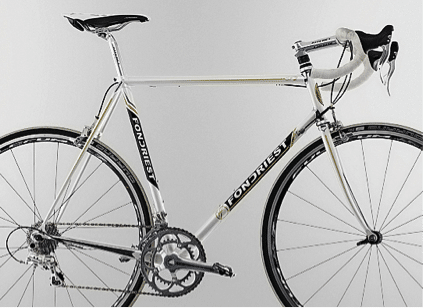
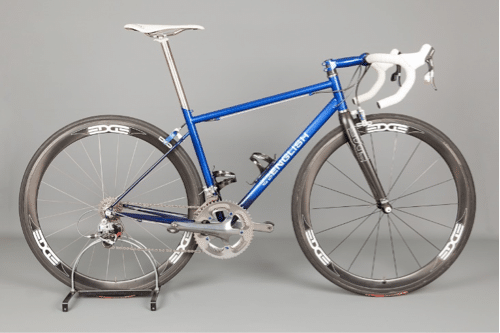

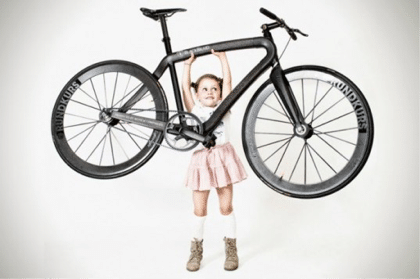
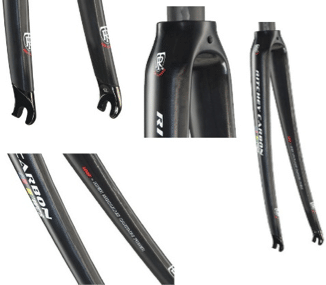
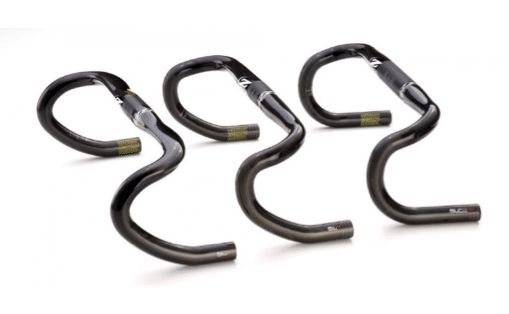
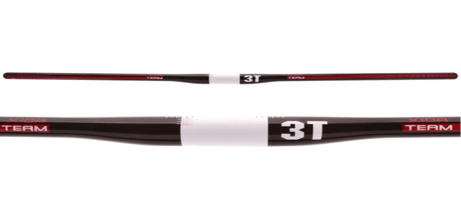
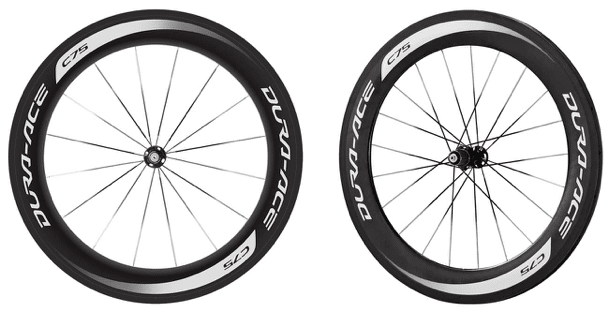
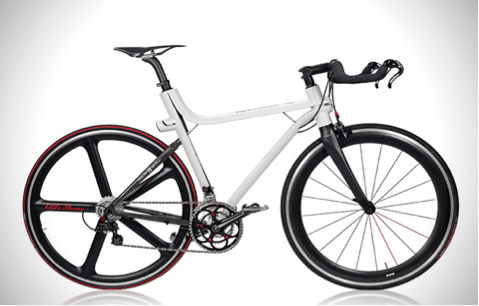
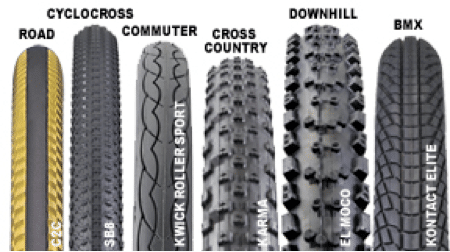

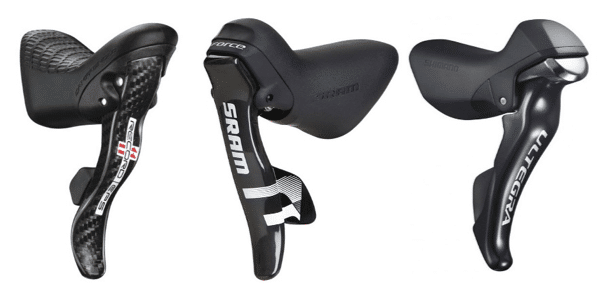
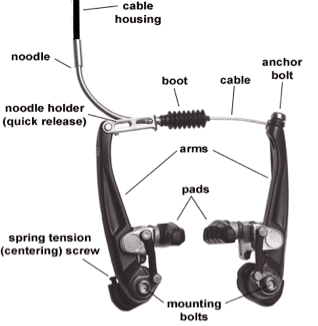
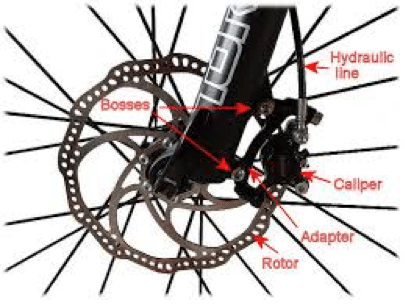
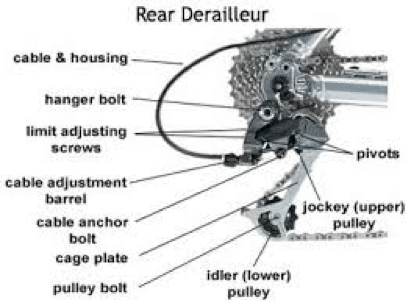
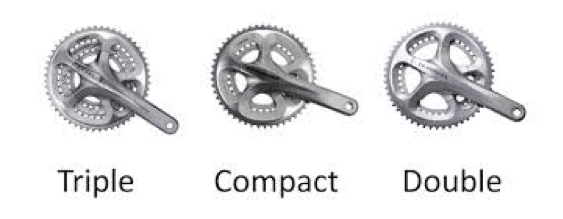
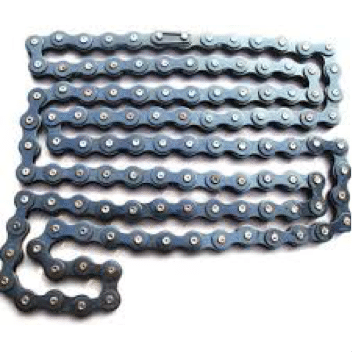


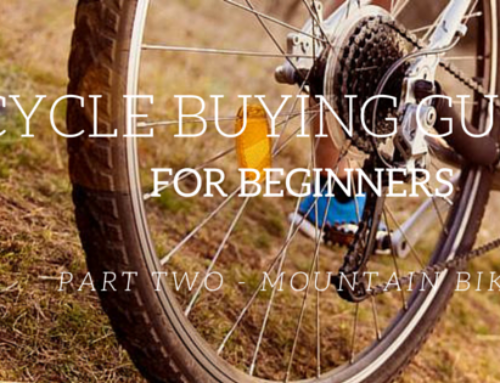
Could you suggest any good road tires?
Could you give me some advice on avoiding damaging a road bike? Thanks a lot.